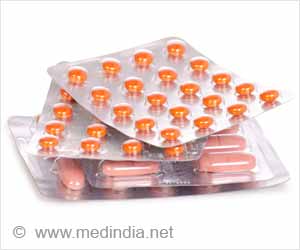Developing new anti-influenza drugs is critical because they are the only weapons that can initially battle an outbreak of new flu strains.

‘New anti-flu drugs are needed because existing drugs aim at targets in the virus which could change or have already done so, creating resistant forms of viruses.’





"It may take six months or more from identifying a new strain to actually having a vaccine specific to that strain," Webby said. "What's more, even a vaccine for the seasonal flu may be only 50 to 75 percent effective." Such an effectiveness gap may arise because new strains may appear after flu epidemiologists have decided which strains of the virus to target with the vaccine for a given flu season. In their studies, the researchers explored how a highly promising class of anti-influenza drug targets a bit of viral machinery, called an endonuclease, essential for the virus to replicate. The endonuclease helps "disguise" viral genetic material to fool the infected cell into generating new virus.
The researchers analyzed how a prototype anti-flu drug called L-742,001 plugs into the critical functional region of the endonuclease, called the active site, to block its function. Investigators chose L-742,001 because it is a gangly molecule that attaches to the active site in many places. Thus, the researchers could explore many avenues to resistance-studying how the virus might mutate to alter the active site in different places.
In their first experiments, the researchers got some good news. The scientists found that the virus could not evolve resistance to L-742,001 when researchers exposed successive generations of the virus to the drug-as might happen in clinical use of the drug.
"This finding is an encouraging sign that under natural conditions the virus may not readily become resistant to this class of drug," Webby said.
Advertisement
That structural analysis of the resistant mutations established that drugs like L-742,001 actually targeted the endonuclease active site.
Advertisement
More specifically, the mutation studies identified regions of the active site that the virus could potentially mutate to evolve resistance to the L-742,001 class of drugs. This insight will help guide co-corresponding author Thomas Webb, Ph.D., of SRI International, who has been leading the synthesis of new drug molecules that don't plug into such regions, to avoid such potential resistance. White said progress has already been made in making improved anti-influenza drug candidates.
"We already have molecules that bind to the active site much, much better than L-742,001, and stay away from one of the pockets that could evolve resistance," White said. "And these findings give us more insight into designing drugs that avoid that region."
The researchers issued one caution: although the flu virus exposed to the drug did not naturally evolve resistance, it could develop resistance under continued "drug pressure."
"For example," Webby said, "the virus might develop and maintain resistance in the context of a family where multiple people are using such a drug." However, he added: "Our study suggests that these resistant mutants probably can't compete with natural viruses but by keeping the drug pressure on they do have the advantage."
White said anti-viral drug research in general could benefit from the St. Jude approach to artificially generating resistant mutants and analyzing their structure.
"It's certainly quite important that researchers perform the standard experiments of exposing a virus to drugs to see if resistance develops," White said. "But this technique of generating mutants adds an important new dimension that enables researchers to confirm the targets of antiviral and to further probe the nature of potential resistance."
Source-Newswise










